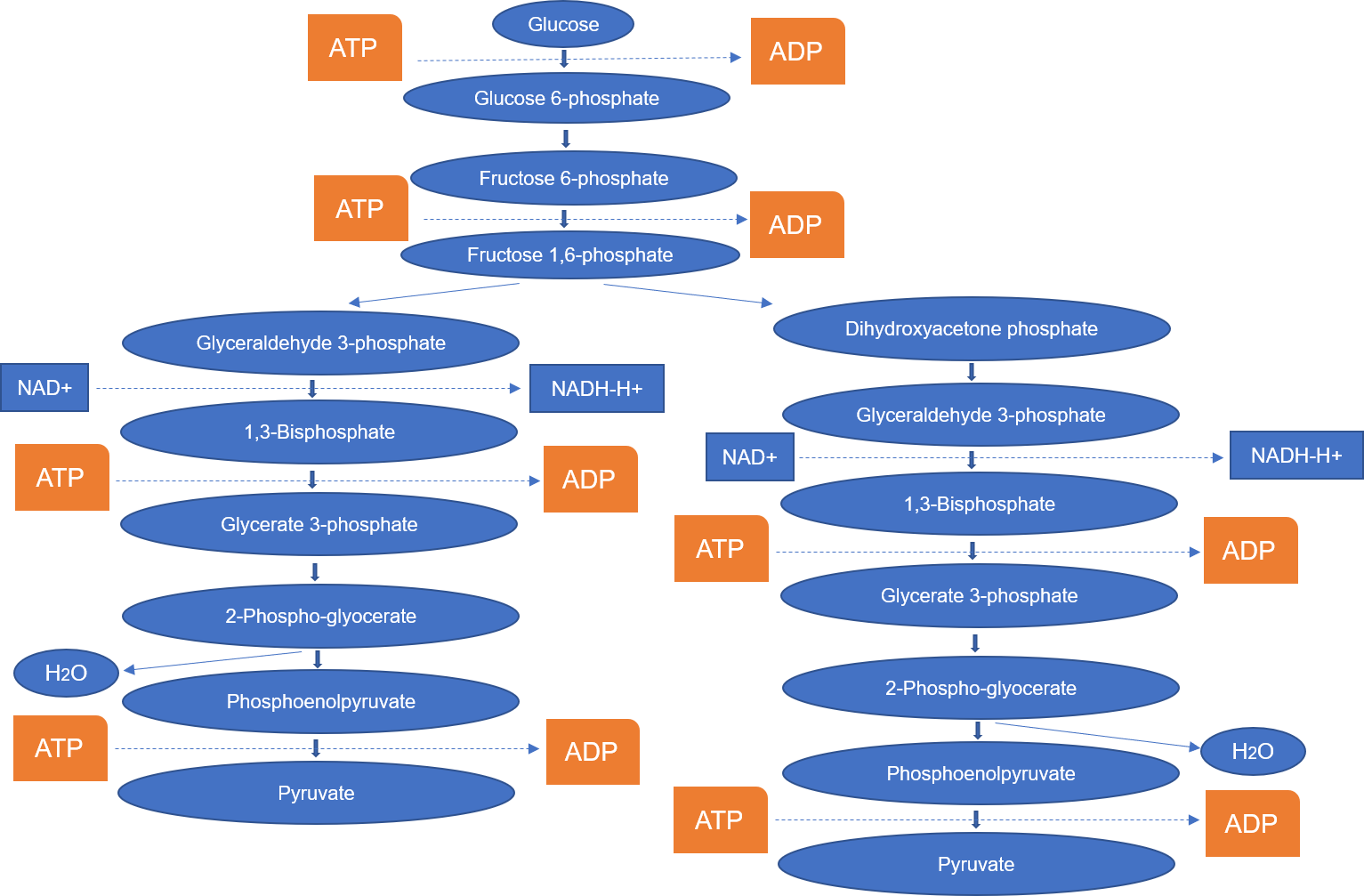Glycolysis is a common metabolic pathway in almost all cells. It occurs in the cytoplasm of the cell. Glycolysis consists of ten enzyme-catalyzed reactions whose main purpose is to convert glucose into pyruvate and produce energy in the form of ATP. For cells without mitochondria, like erythrocytes, glycolysis is the only source of energy for ATP. For cells containing mitochondria, glycolysis is the preparatory pathway for the complete oxidation of glucose to produce large amounts of ATP. All cells in the body use glycolysis to produce energy. Some of the intermediates in the glycolytic cycle steps may also have direct biological roles, such as dihydroxyacetone phosphate, which is used in lipid synthesis. By monitoring metabolite levels at key steps of the glycolytic pathway, we can gain useful insights into the overall energy homeostasis of biological systems. Defective glycolysis can lead to various diseases, such as cancer.
To explore in depth the relevance of glycolytic metabolic pathways and related metabolites to the pathophysiology of various diseases affecting human health, v-innovate Technologies offers an integrated and comprehensive service for the analysis of glycolytic pathway key point substances and other metabolites in biological samples.
 Figure 1. Glycolysis: the glucose oxidative pathway at cellular levels.
Figure 1. Glycolysis: the glucose oxidative pathway at cellular levels.
The glycolysis metabolism service provided by v-innovate Technologies is based on our cutting-edge chromatographic separation and mass spectrometry platforms. The experimental workflow involves 4 steps: sample collection, metabolites extraction, MS data analysis and bioinformatics analysis (Figure 2). Our service will be tailored to specific samples and needs for optimal results.
 Figure 2. The overall workflow of glycolysis metabolism service.
Figure 2. The overall workflow of glycolysis metabolism service.
We can analyze any biological materials including but not limited to cells and solid tissues from animals. If you need transport your samples to us, please follow the below requirements for different types of sample:
Shipment condition: dry ice
Equipped with advanced mass spectrometry for the determination of carbohydrate metabolites, powerful bioinformatic analysis software and a panel of experienced technicians and scientists, we provide customer-tailored targeted glycolysis pathway metabolites analysis services with rapid experimental procedures and easy to read report, to advance your scientific research.
References
